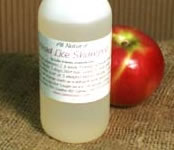 Head
lice control can be a working parents nightmare. It is
not at all unusual to receive a phone call from your
childcare service or school asking you to come and pick
your child up as they have head lice or nits. Do not
despair head lice and nits are very common in children
and today can be treated easily with a variety of products
available on the market. For them to be effective however
it is important to follow the instructions carefully. Head
lice control can be a working parents nightmare. It is
not at all unusual to receive a phone call from your
childcare service or school asking you to come and pick
your child up as they have head lice or nits. Do not
despair head lice and nits are very common in children
and today can be treated easily with a variety of products
available on the market. For them to be effective however
it is important to follow the instructions carefully.
What are head lice?
Head lice are small insects not much bigger
than a pinhead. They live on, or very close to the scalp
and do not wander far down the hair shaft for very long.
The lice have a mouth which is like a very small needle,
which it sticks into the scalp and drinks blood. Head lice
only live on human beings and it is not possible to catch
them from animals.
What are nits?
Nits are not the same thing as lice. If
you have nits, it does not always mean that you have head
lice. Nits are egg cases laid by the lice, which are stuck
on the hair shafts. They are smaller than a pinhead and
are pearly white.
How do you get head lice?
The majority of infections
are caught from close contact with peers, friends and
family. Head lice can walk from one head to another through
physical contact,
or by sharing hats, brushes and combs.
How do you know you have them?
Itchy scalp- behind the ears, along the
hairline around the back of the neck. The itching results
from a skin reaction to the saliva of the lice. Lice eggs
(nits) appear as tiny, silvery clumps virtually cemented
to the hair shaft near the roots.
Strategies to manage head
lice.
There are various Pyrethrum treatments,
which are available without prescription, from your local
chemist. Pyrethrum is a natural pesticide that is deadly
to lice but safe for people. Read and follow the instructions
carefully.
Removing the nits (eggs) is vital.
This takes time and patience especially
if the child o has long thick hair. It may be helpful to
provide some distraction for the child, such as a video,
or their favourite T V programme. Tools which could make
the removal of nits easier include a fine tooth comb, double
sided sticky tape and finger nails. Try dipping your comb
into a solution of equal parts vinegar and water, to loosen
the nits. Remove every egg, which bonds to the hair shaft.
P art the hair in four sections and clip
it up. Starting from the hairline at the nape of the neck,
take small sections and comb thoroughly from the base to
the ends of the hair wiping the nits from the comb with
a tissue. During the process keep the hair damp. A week
to ten days later (depending on the directions on the product)
repeat the entire process, to catch any nits you may have
missed the first time.
Preventing Head Lice
There are only a few ways known
to help prevent the spread of head lice.
- Check your Childs hair regularly
- Comb their hair thoroughly
- Tie long hair up
- Teach your child not to share hair
accessories, brushes, combs, hats or clothing

|

